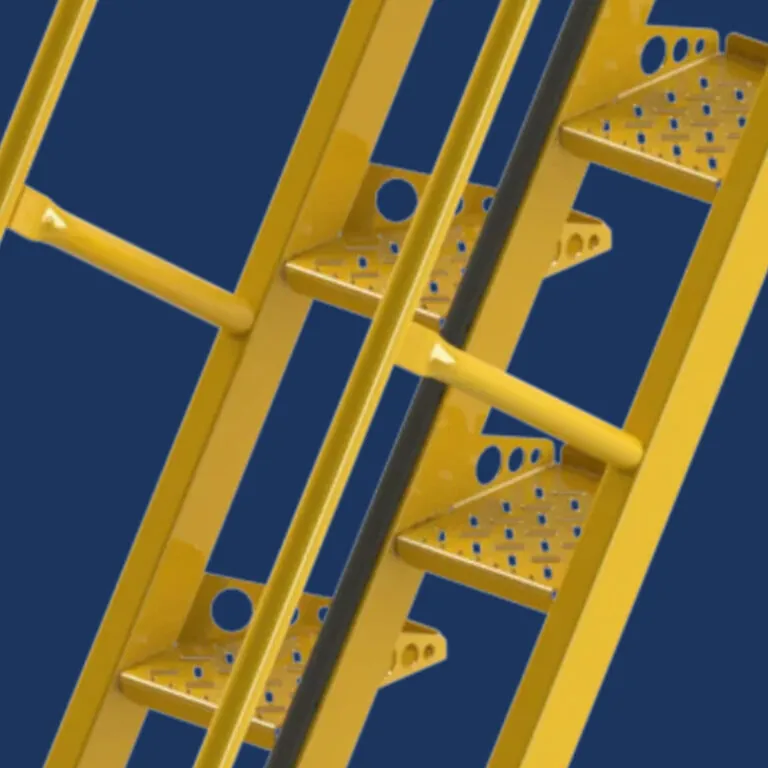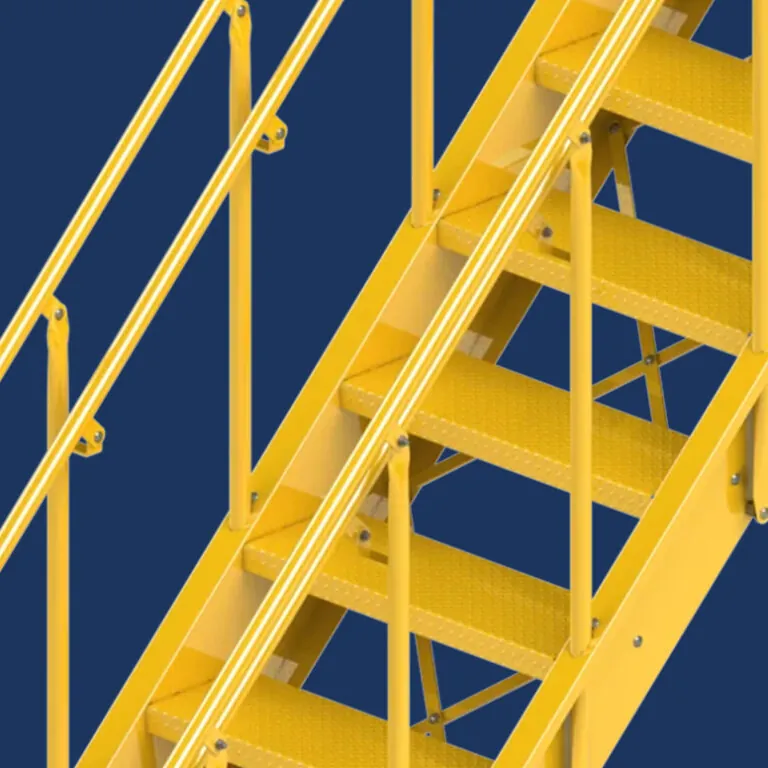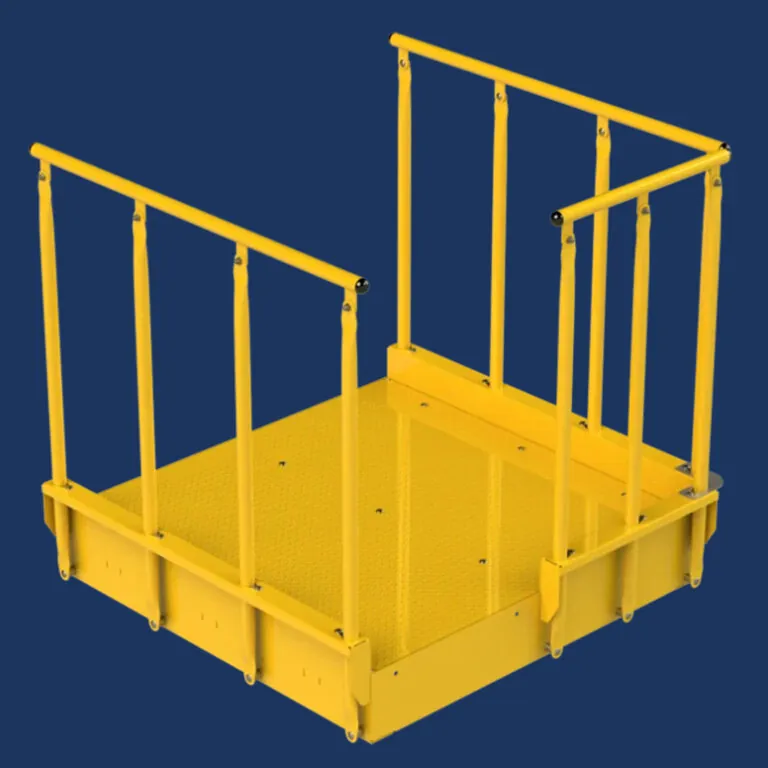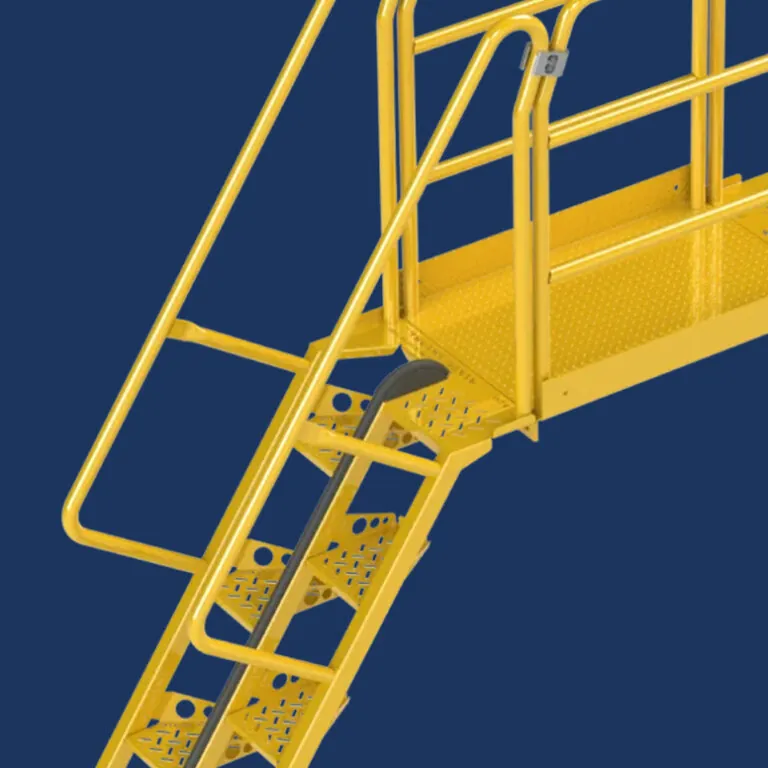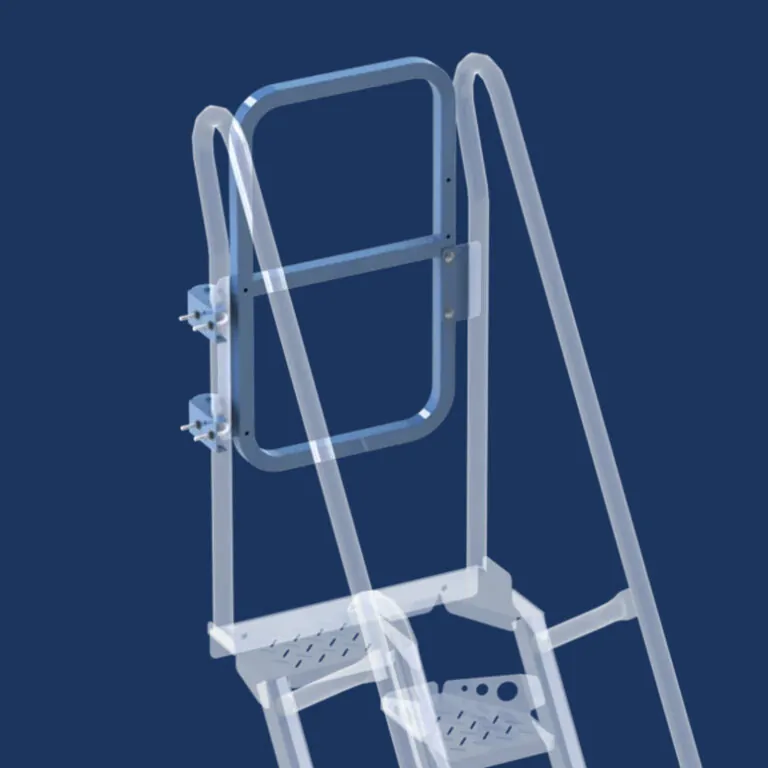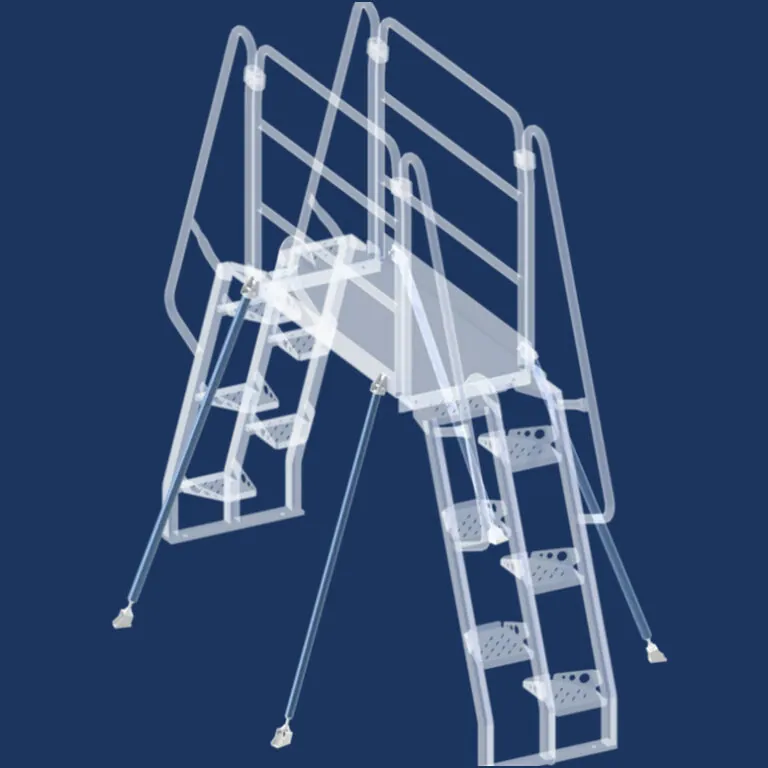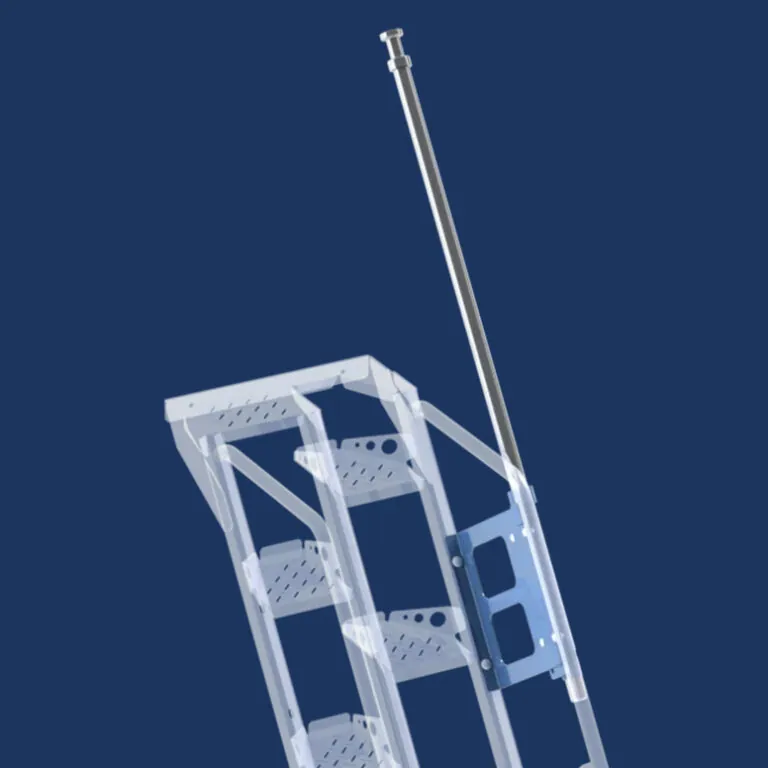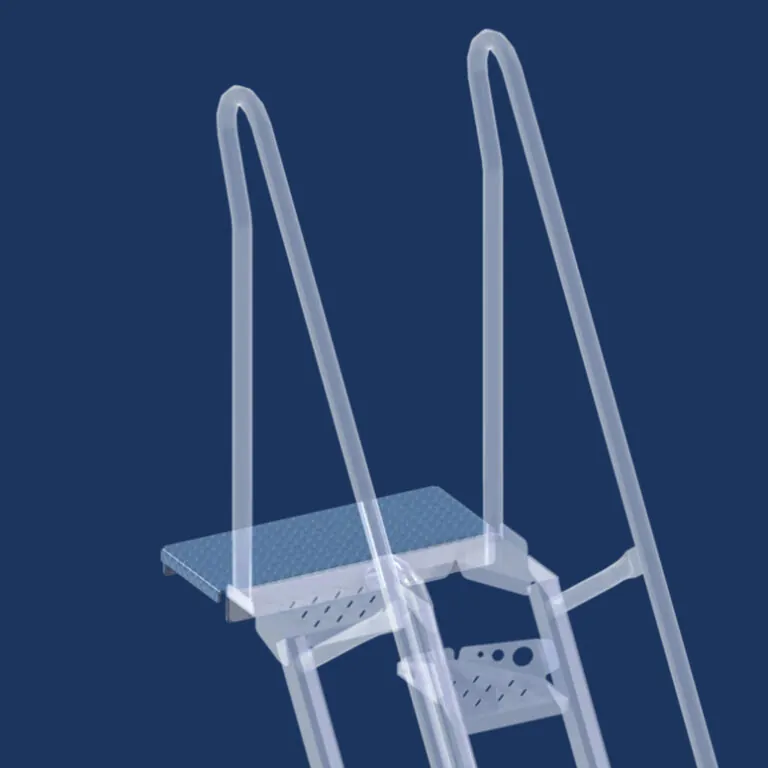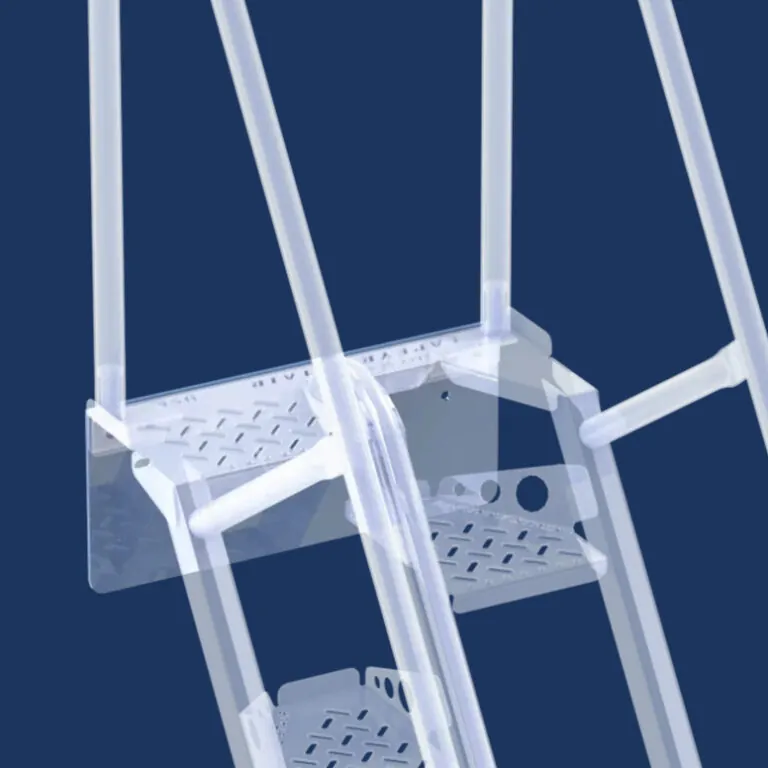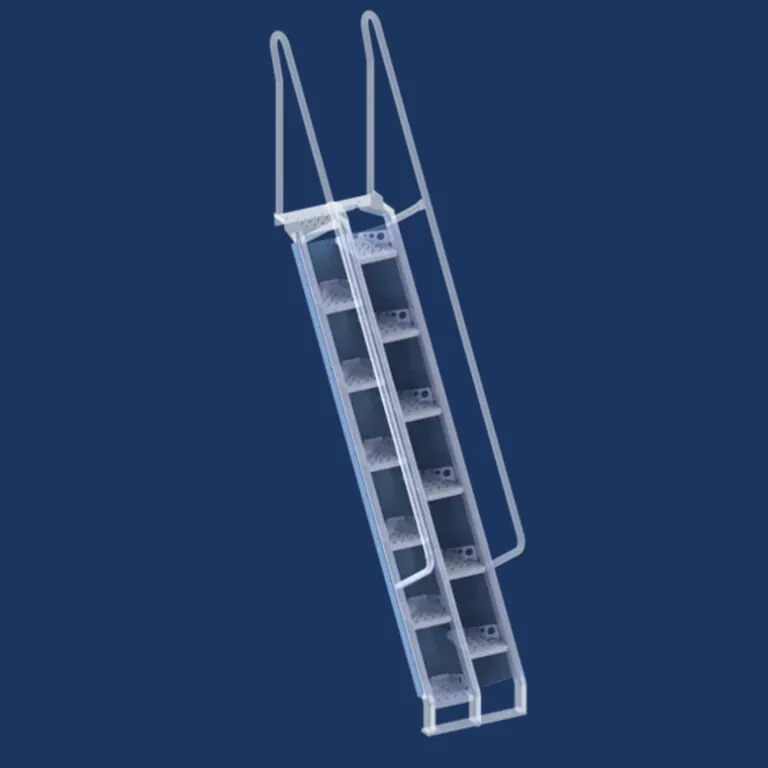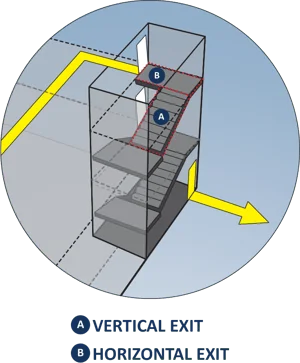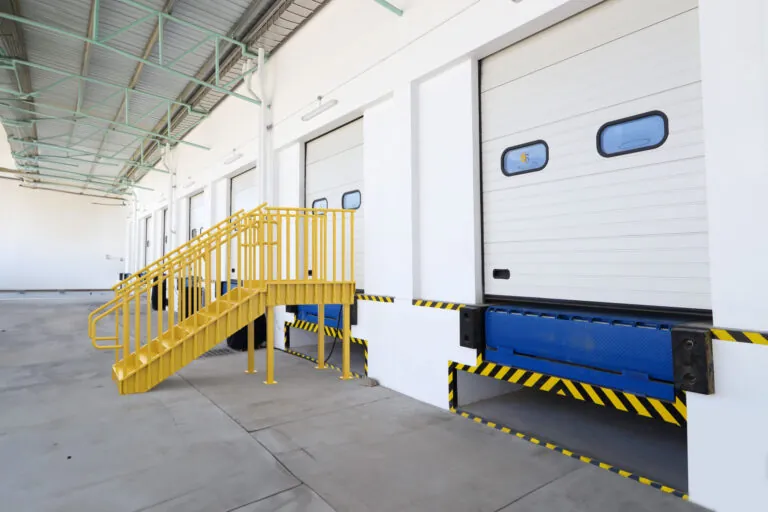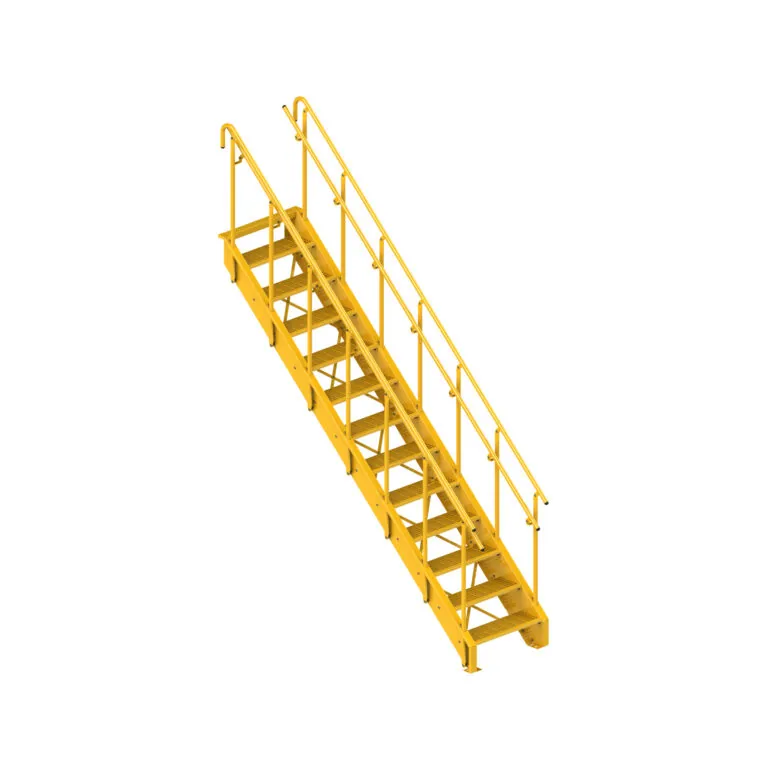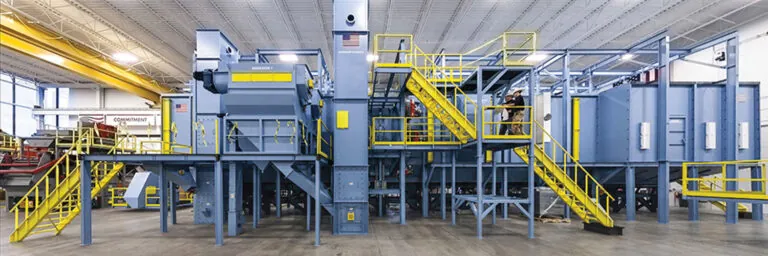An exit discharge is a critical component of an exit route or means of egress from a building. In the case of emergency, it ensures occupants a safe and direct passage from inside the building to a protected area outside the building. The exit discharge requirements are established by OSHA, the International Building Code (IBC), and the National Fire Protection Association (NFPA) Life Safety Code. These codes work together to define a consistent framework and terminology for the exit discharge definitions, purpose, and design requirements.
What is an exit discharge? (Exit discharge definition)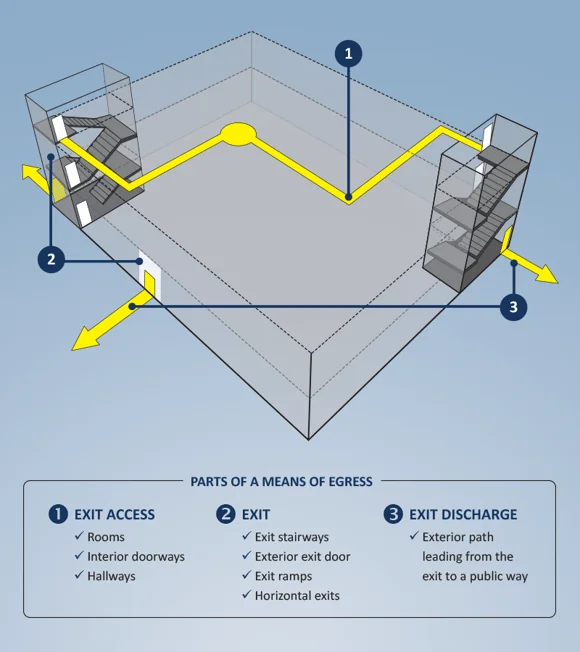
An exit discharge is the part of an exit route that leads directly from the termination of an exit to a public way or an open space with access to the outside. The exit discharge is usually an exterior path of egress travel between the building and the public way.
An exit discharge is part of an OSHA Exit route under section 1910.34 and part of an IBC Means of Egress under the 2018 IBC Chapter 10 Means of Egress Section 1028.
The OSHA definition of an exit discharge differs slightly from the IBC definition. OSHA states that an exit discharge is the part of the exit route that leads directly outside or to a street, walkway, refuge area, public way, or open space with access to the outside. An example of an OSHA exit discharge is a door at the bottom of a two-hour fire resistance-rated enclosed stairway that discharges to a place of safety outside the building. Under IBC, the exterior exit door is a component of the exit not the exit discharge.
According to the IBC, a means of egress is an unobstructed path from an occupied portion of a building to a public way outside of the building. The means of egress consists of three egress components: the exit access, the exit, and the exit discharge. The exit access leads from any occupied portion of a building to the exit. The exit is the portion of a means of egress between the exit access and exit discharge including the exit doors, exit stairways, exterior exit ramps, exit passageways, and horizontal exits. The exit discharge begins at the termination of the exit and the leads to the public way.
Exit discharge components
An exit discharge is a component of a means of egress that serves as the portion of the means of egress system between the termination of an exit and a public way. Exit discharge components shall be sufficiently open to the exterior so as to minimize the accumulation of smoke and toxic gases.
What is level of exit discharge?
The level of exit discharge is between the termination of an exit and a public way and shall lead directly to the exterior of the building. The exit discharge shall be at grade or shall provide a direct path of egress travel to grade. The exit discharge shall not reenter a building.
Exit discharge requirements IBC
The IBC Exit discharge requirements are found under 2018 IBC section 1028 – Exit Discharge. This section defines the general requirements for an exit discharge, the minimum widths, capacity, the components, construction and openings, and access to a public way.
Exit discharge general requirements
The general requirements for an exit discharge are found under IBC Section 1028.1. With few exceptions, the exits shall discharge directly to the exterior of the building. The exit discharge shall be at grade or shall provide a direct path of egress travel to grade. The exit discharge shall not reenter a building. The exceptions to these requirements are explained in the below Exceptions section.
Exit discharge width and capacity requirements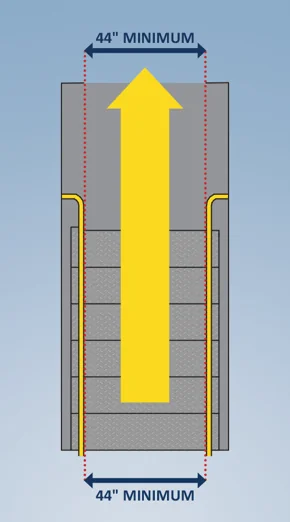
IBC Section 1028.2 requires that the minimum width or required capacity of the exit discharge shall be not less than the minimum width or required capacity of the exits being served. This means that the exit discharge should be as wide as the stairway or passageway that precedes it. The IBC stair code typically requires a 44 inches minimum.
For an accessible means of egress, the width must be as wide as the accessible stairway, typically 48 inches minimum between handrails unless the building is equipped with an automatic sprinkler system.
Egress courts requirements
An egress court is a court or yard which, as a component of an exit discharge, provides access to a public way. The minimum width of an egress courts is 44 inches, except for occupancy groups R-3 and U, which have a minimum width of 36 inches. The width shall not be less than the required capacity. The required width and capacity of an egress court shall be unobstructed to a height of 7 feet.
For egress courts less than 10 feet in width, the egress court walls should have a minimum 1-hour fire-resistance-rated construction for a distance 10 feet above the floor of the egress court. Opening within the walls should be protected by opening protectives with a minimum fire protection rating of not less than 3/4 hour. Exceptions to this rule include egress courts of less than 10 occupants and occupancy group R-3.
Exit discharge access to a public way requirements
The exit discharge shall provide direct and unobstructed access to a public way. A public way is a street, alley or other parcel of land open to the outside air leading to a street that has been appropriated for public use and has a clear width and height of at least 10 feet.
IBC Exit discharge exceptions
A few exceptions to the IBC requirements for an exit discharge allow the discharge to be within the interior of the building rather than the exterior. Other exceptions address encroachments into the egress width and situations where access to a public way is not feasible.
Exceptions to general requirements
Under the IBC definition, the exit discharge is typically located at the exterior of the building as a path to the public way. IBC section 1028.1 allows two exceptions to this rule. In this case an exit discharge can be on the interior from interior stairways or ramps to an exterior exit door or through a vestibule. Under both the exceptions, not more than 50% of the number and minimum width or required capacity of the interior exit stairway or ramp is permitted through these areas on the level of discharge.
Exceptions to egress court requirements
The exception to the egress court requirements under section 1028.4.1 allows for encroachments into the egress width and capacity complying with Section 1005.7. These encroachments include door swings by up to 7 inches into the egress path, handrail projections by up to 4 1/2 inches on each side, and other protruding objects under section 1003.3.
Egress courts serving an occupant load of less than 10 occupants or occupancy group R-3 are not subject to the requirement of having a 1-hour fire-resistance-rated wall construction for a distance of 10 feet above the floor of the egress court.
Exceptions to access to a public way
Typically an exit discharge should provide a direct and unobstructed access to a public way. Where access to a public way cannot be provided, a safe dispersal area should be provided with the following requirements:
- The area shall be of a size to accommodate not less than 5 square feet for each person.
- The area shall be located on the same lot not less than 50 feet away from the building requiring egress.
- The area shall be permanently maintained and identified as a safe dispersal area.
- The area shall be provided with a safe and unobstructed path of travel from the building.
OSHA exit discharge requirements
The OSHA exit discharge requirements are found in section 1910.34 – Exit Routes and Emergency Planning and in 1910.36 – Design and construction requirements for exit routes. An OSHA Exit discharge means the part of the exit route that leads directly outside or to a street, walkway, refuge area, public way, or open space with access to the outside.
An OSHA exit route is similar to the IBC means of egress. It is a continuous and unobstructed path of exit travel from any point within a workplace to a place of safety (including refuge areas). It consists of three parts: The exit access; the exit; and, the exit discharge.
The exit access means that portion of an exit route that leads to an exit.
The exit means that portion of an exit route that is generally separated from other areas to provide a protected way of travel to the exit discharge. Under the OSHA stair cbode, an example of an exit is a two-hour fire resistance-rated enclosed stairway that leads from the fifth floor of an office building to the outside of the building.
The exit discharge is the final component of the exit route beyond the exit.
Exit discharge access to the outside requirement
OSHA Section 1910.36(c)(1) states that each exit discharge must lead directly outside or to a street, walkway, refuge area, public way, or open space with access to the outside.
Exit discharge accommodation of building occupants requirements
OSHA section 1910.36(c)(2) requires that the street, walkway, refuge area, public way, or open space to which an exit discharge leads must be large enough to accommodate the building occupants likely to use the exit route.
Exit stairs continuing beyond the level of exit discharge requirement
OSHA section 1910.36(c)(3) requires that exit stairs that continue beyond the level on which the exit discharge is located must be interrupted at that level by doors, partitions, or other effective means that clearly indicate the direction of travel leading to the exit discharge.
Final points
OSHA exit routes and IBC means of egress are critical building components that ensure occupants and employees have a safe way to exit the building in case of emergency. These systems must provide a free, unobstructed, and direct means of travel from anywhere within the building to a safe location outside of the building.
FAQs
How do you calculate exit discharge capacity?
The exit discharge capacity must be at least the minimum width or required capacity of the exits being served. In general the exit discharge capacity for an exit stairway is 0.3 inches per occupant and for other exit types, 0.2 inches per occupant.
How many exit routes does OSHA require?
The number of exit routes must be adequate. Generally, at least two exit routes must be available to permit prompt evacuation. More than two exit routes must be available for larger buildings with higher occupancy, and a single exit route is permitted if all employees are able to evacuate safely.
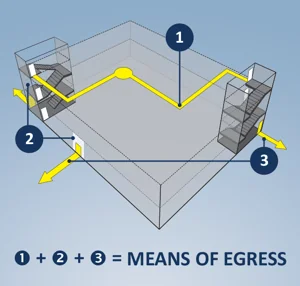
How many exit routes does IBC require?
The number of exits required by the 2018 IBC is based on the occupancy of the space and the maximum common path of egress travel distance per Table 1006.2.1 and 1006.3.2. Generally, a minimum of two exits shall be provided.
What is the difference between exit and egress?
An exit is a component of a means of egress. The means of egress provides the path of travel from the building to an area outside the building. The exit is the portion of the means of egress between the exit access and exit discharge, such as a stairway or ramp.
What is a horizontal exit?
A horizontal exit is an exit component, such as a passageway or hallway, with fire-resistance rated construction and opening protectives intended to compartmentalize portions of a building thereby creating refuge areas that afford safety from the fire and smoke from the area of fire origin.
What is a vertical exit?
A vertical exit is an exit component, such as a stairway or ramp, that serves to meet one or more of the means of egress design requirements and provides for a protected path of egress travel to the exit discharge or public way.
What is exit access travel distance?
The exit access travel distance is the distance within the exit access portion of the means of egress to an exit. Generally an exit access travel distance should not be greater than 200 feet for buildings without a sprinkler system and 250 feet for buildings with a sprinkler system.
What is the maximum travel distance to a fire exit?
The maximum travel distance to a fire exit is determined by the 2018 IBC Table 1017.2 Exit Access Travel Distance. Generally, the maximum travel distance should not be greater than 200 feet for buildings without a sprinkler system and 250 feet for buildings with a sprinkler system.

